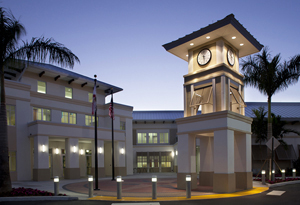After being discussed since 2019, the latest incarnation of Wellington’s proposed golf cart ordinance passed its first reading at the Tuesday, June 22 meeting of the Wellington Village Council.
The measure comes up for its second and final reading on Aug. 24 with a target date for implementation of March 1, 2022.
“After years of discussing this topic, this is the most progress any council has ever made,” Mayor Anne Gerwig said. “I hope we can come to an agreement tonight. I’m very proud of the community, the staff and the council for getting this far in the process, looking for alternative transportation that is more resilient and easier for our community. I know we may not get it perfect, but I’d like us to get something so that we can start the process.”
Despite strong opinions, with some good compromise, a resolution was passed.
Gerwig explained that the thing residents should know is that a low-speed vehicle or neighborhood electric vehicle looks like a golf cart with extra equipment, but it is very different. Legally, it is registered as a vehicle and has a license tag just like a car, requires a licensed driver, can be driven on roadways and is not what the new ordinance is about. She also noted that the pathways under discussion are not sidewalks, which are less than eight feet wide, usually four or five feet wide.
Currently, golf carts are not allowed to be used on any of the roadways or multi-modal paths (those greater than eight feet) anywhere in the village.
A golf cart can be driven by a 14-year-old on roadways having a speed limit of 25 mph or less, according to state law. Golf carts can be operated on private roadways in gated communities. The council cannot address these issues; it can only address golf carts on the village’s multi-modal pathways.
The purpose of the ordinance is to allow residents to legally operate golf carts, which is a recreational vehicle most often used on golf courses. These will be permissible to operate on designated roadways and the multi-modal pathways within the village. The new rules passed require that a driver must have at least a learner’s permit and establish safety equipment necessary for nighttime use, occupancy and seating requirements, and who has the right of way (the golf cart is always last).
“We’ve been working on this for over a year,” Vice Mayor John McGovern said. “We’ve been to every committee, and we have the PBSO as a full partner.”
Councilman Michael Napoleone wanted additional restrictions added to the current version of the ordinance.
“I feel very strongly that we should have a greater restriction on our pathways,” he said. “If you want to ride on our pathways, you have to have a learner’s permit or driver’s license.”
Councilman Michael Drahos agreed.
“It is a critical point for me [to require a license],” he said. “To allow a 14-year-old to operate a golf cart is completely unreasonable to me. We can’t do anything about Florida law allowing for a 14-year-old to operate on [certain] roads, but we can on village paths.”
Councilwoman Tanya Siskind was the third voice to come out in favor of requiring at least a learner’s permit. “They should have to complete some type of safety course, and the learner’s permit is the way to go,” she said.
Gerwig and McGovern felt being uniform and consistent or compromising at age 15 (the age necessary to obtain the learner’s permit after taking a rules of the road course) was best. An hour of discussion led to the agreement about a learner’s permit.
“I think this is a good starting point, and we can move forward and let residents see the ordinance, and [then] have a robust discussion of the second reading,” McGovern said. “With a number of amendments and changes, and two years of work and public input, it wasn’t easy, and everybody wants to do their own thing, so now we’ve got to work together on it.”
The ordinance passed unanimously on its first reading.








